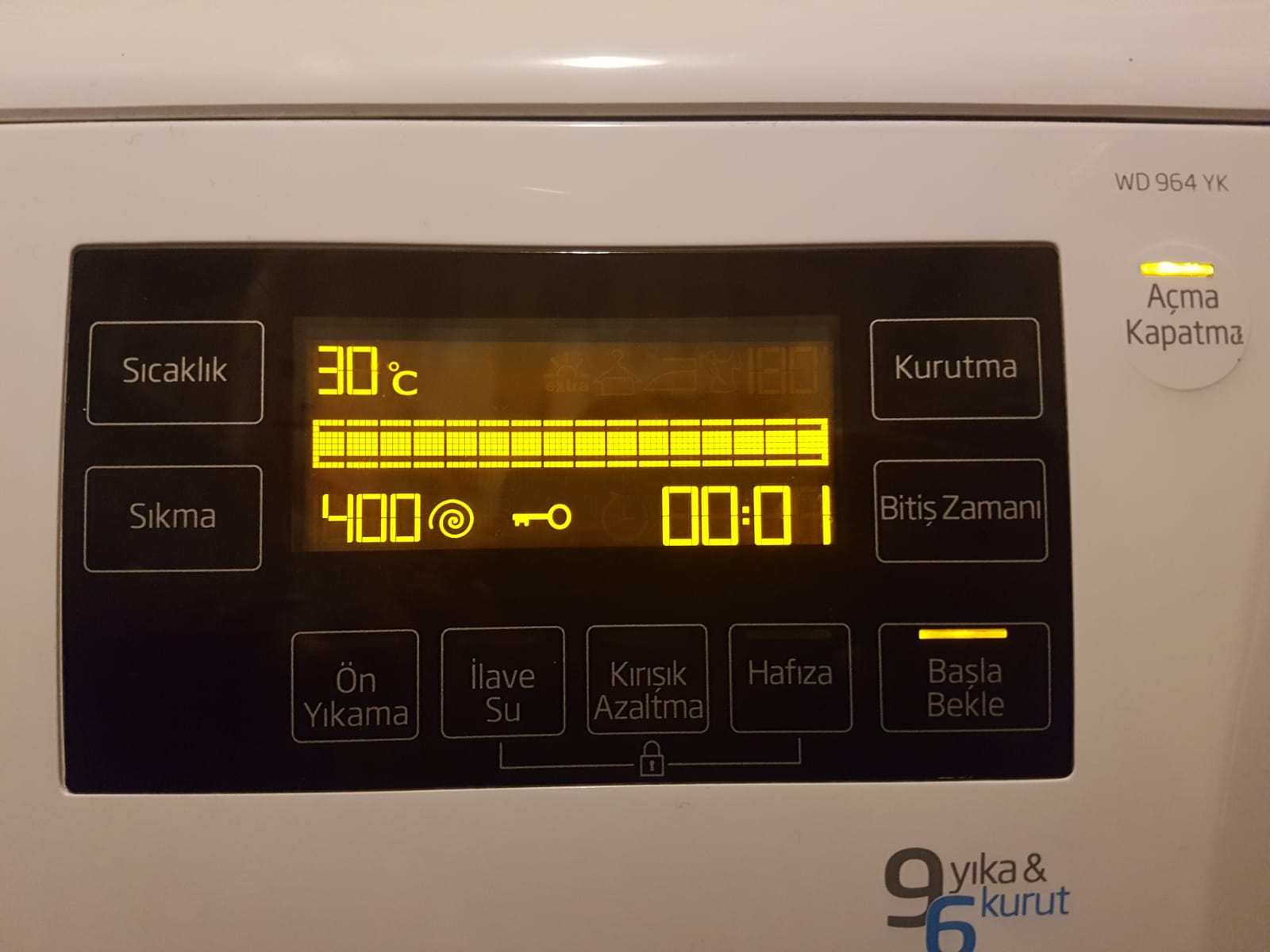 u araştırmada, ?Çocuklar İçin Benlik Algısı Profili?nin (ÇİBAP)uyarlanarak, faktör yapısının farklı değişkenlere göre eşitliğinin test edilmesiamaçlanmıştır. Bu amaç ile Harter (1985) tarafından geliştirilen ve orijinal diliİngilizce olan ÇİBAP ilköğretim 5?8. sınıf öğrencileri için uyarlaması yapılmış veuyarlanan aracın beş faktörlü yapısının cinsiyet, sosyo?ekonomik düzey ve sınıfdüzeylerine ait gruplar için eşitliği test edilmiştir.Araştırma tarama modelindedir. Ön ve deneysel uygulamalarçerçevesinde veriler, 3?8. sınıflardan oluşan iki çalışma grubundan eldeedilmiştir. Çalışma grupları ön uygulama için 513; deneysel uygulama için 2806katılımcıdan oluşmaktadır. Katılımcıların sayısının cinsiyet, sosyo?ekonomikdüzey (yalnızca deneysel form uygulamasında) ve sınıf düzeylerine göre dengelibir biçimde dağılmasına özen gösterilmiştir.ÇİBAP’ın Amerika Birleşik Devletlerindeki psikometrik niteliklerine ilişkinbilgiler el kitabında bulunmaktadır. Bu doğrultuda, araçtan elde edilen puanlarınkendi kültürü içerisinde yüksek geçerlilik ve güvenirlilik düzeylerine sahipolduğuna ilişkin deneysel kanıtlar bulunmaktadır.ÇİBAP’ın Türk kültürüne uyarlanması sürecinde, uyarlama standartlarınauyulmuştur. Bunun için çeviriler tamamlandıktan sonra uzman görüşlerinebaşvurulmuş, çeviri formun geri çevirisi yapılmış ve aracın dilsel eşdeğerliliğininsağlanıp sağlanamadığına ilişkin her iki dili de iyi bilen bir gruba uygulamayapılmıştır. Çevirinin dilsel eşdeğerlilik kanıtları sağlandıktan sonra, aracın önuygulaması yapılmıştır. Ön uygulamadan elde edilen veriler analiz edilmiş,psikometrik açıdan sorunu olan maddeler için alan uzmanlarının görüşlerinebaşvurulmuştur. Alan uzmanlarından ve ön uygulama sürecinde katılımcılardanalınan geribildirimler doğrultusunda, bazı maddeler yeniden gözden geçirilmiş veböylece asıl form hazırlanmıştır.Ön ve asıl uygulamalardan elde edilen veriler için test istatistiklerihesaplanmış, cinsiyet ve sınıf düzeyinde alt ölçek puanları arasındaki farklarincelenmiştir. Veri setlerinin geçerlilik ve güvenirlilik analizleri için uygunluğu içinnormallik, kayıp değer, uçdeğer, çoklu doğrusallık ve tekillik açısından olasıproblem kaynakları test edilmiştir. Bu doğrultuda, geçerlilik çalışmaları içinaçımlayıcı ve doğrulayıcı faktör analizleri yapılmış, alt ölçekler arasındakikorelasyonlar hesaplanmış, madde ayırt ediciliklerini belirlemek amacıyla maddetest korelasyonları test edilmiş, iç tutarlılık katsayılarını belirlemek amacıylaCronbach alfa değerleri hesaplanmış ve son olarak deneysel formun kararlılıkkatsayısını elde etmek amacıyla test?tekrar test yöntemi uygulanmıştır. Yapılananalizler sonucunda, ÇİBAP’dan elde edilen puanların geçerliliği vegüvenirliliğine ilişkin deneysel kanıtlar ortaya konmuştur.ÇİBAP’ın beş faktörlü yapısının cinsiyet, SED ve sınıf düzeylerine aitgruplar için eşitliğini belirlemek amacıyla çoklu?grup doğrulayıcı faktör analizleriyapılmıştır. Yapılan analizler sonucunda, aracın beş faktörlü yapısının sözkonusu değişkenler için eşit olduğu sonucuna ulaşılmıştır.Elde edilen sonuçlara genel olarak bakıldığında, ÇİBAP’ın orijinalkültürdeki faktör deseninin, Türk kültürü için de aynı biçimde geçerli olduğu; 5?8.sınıflardaki çocukların benlik algılarını ölçmek amacıyla kullanılan ÇİBAP’danelde edilen puanların geçerliliği ve güvenirliliğinin yüksek olduğu ifade edilebilir.Ayrıca, ÇİBAP’ın beş faktörlü yapısının cinsiyet, SED ve sınıf düzeylerine aitgruplar için ölçme değişmezliğine sahip olduğu; diğer bir ifadeyle aracın faktöryapısının söz konusu değişkenler için eşit olduğu görülmektedir.Abstract
u araştırmada, ?Çocuklar İçin Benlik Algısı Profili?nin (ÇİBAP)uyarlanarak, faktör yapısının farklı değişkenlere göre eşitliğinin test edilmesiamaçlanmıştır. Bu amaç ile Harter (1985) tarafından geliştirilen ve orijinal diliİngilizce olan ÇİBAP ilköğretim 5?8. sınıf öğrencileri için uyarlaması yapılmış veuyarlanan aracın beş faktörlü yapısının cinsiyet, sosyo?ekonomik düzey ve sınıfdüzeylerine ait gruplar için eşitliği test edilmiştir.Araştırma tarama modelindedir. Ön ve deneysel uygulamalarçerçevesinde veriler, 3?8. sınıflardan oluşan iki çalışma grubundan eldeedilmiştir. Çalışma grupları ön uygulama için 513; deneysel uygulama için 2806katılımcıdan oluşmaktadır. Katılımcıların sayısının cinsiyet, sosyo?ekonomikdüzey (yalnızca deneysel form uygulamasında) ve sınıf düzeylerine göre dengelibir biçimde dağılmasına özen gösterilmiştir.ÇİBAP’ın Amerika Birleşik Devletlerindeki psikometrik niteliklerine ilişkinbilgiler el kitabında bulunmaktadır. Bu doğrultuda, araçtan elde edilen puanlarınkendi kültürü içerisinde yüksek geçerlilik ve güvenirlilik düzeylerine sahipolduğuna ilişkin deneysel kanıtlar bulunmaktadır.ÇİBAP’ın Türk kültürüne uyarlanması sürecinde, uyarlama standartlarınauyulmuştur. Bunun için çeviriler tamamlandıktan sonra uzman görüşlerinebaşvurulmuş, çeviri formun geri çevirisi yapılmış ve aracın dilsel eşdeğerliliğininsağlanıp sağlanamadığına ilişkin her iki dili de iyi bilen bir gruba uygulamayapılmıştır. Çevirinin dilsel eşdeğerlilik kanıtları sağlandıktan sonra, aracın önuygulaması yapılmıştır. Ön uygulamadan elde edilen veriler analiz edilmiş,psikometrik açıdan sorunu olan maddeler için alan uzmanlarının görüşlerinebaşvurulmuştur. Alan uzmanlarından ve ön uygulama sürecinde katılımcılardanalınan geribildirimler doğrultusunda, bazı maddeler yeniden gözden geçirilmiş veböylece asıl form hazırlanmıştır.Ön ve asıl uygulamalardan elde edilen veriler için test istatistiklerihesaplanmış, cinsiyet ve sınıf düzeyinde alt ölçek puanları arasındaki farklarincelenmiştir. Veri setlerinin geçerlilik ve güvenirlilik analizleri için uygunluğu içinnormallik, kayıp değer, uçdeğer, çoklu doğrusallık ve tekillik açısından olasıproblem kaynakları test edilmiştir. Bu doğrultuda, geçerlilik çalışmaları içinaçımlayıcı ve doğrulayıcı faktör analizleri yapılmış, alt ölçekler arasındakikorelasyonlar hesaplanmış, madde ayırt ediciliklerini belirlemek amacıyla maddetest korelasyonları test edilmiş, iç tutarlılık katsayılarını belirlemek amacıylaCronbach alfa değerleri hesaplanmış ve son olarak deneysel formun kararlılıkkatsayısını elde etmek amacıyla test?tekrar test yöntemi uygulanmıştır. Yapılananalizler sonucunda, ÇİBAP’dan elde edilen puanların geçerliliği vegüvenirliliğine ilişkin deneysel kanıtlar ortaya konmuştur.ÇİBAP’ın beş faktörlü yapısının cinsiyet, SED ve sınıf düzeylerine aitgruplar için eşitliğini belirlemek amacıyla çoklu?grup doğrulayıcı faktör analizleriyapılmıştır. Yapılan analizler sonucunda, aracın beş faktörlü yapısının sözkonusu değişkenler için eşit olduğu sonucuna ulaşılmıştır.Elde edilen sonuçlara genel olarak bakıldığında, ÇİBAP’ın orijinalkültürdeki faktör deseninin, Türk kültürü için de aynı biçimde geçerli olduğu; 5?8.sınıflardaki çocukların benlik algılarını ölçmek amacıyla kullanılan ÇİBAP’danelde edilen puanların geçerliliği ve güvenirliliğinin yüksek olduğu ifade edilebilir.Ayrıca, ÇİBAP’ın beş faktörlü yapısının cinsiyet, SED ve sınıf düzeylerine aitgruplar için ölçme değişmezliğine sahip olduğu; diğer bir ifadeyle aracın faktöryapısının söz konusu değişkenler için eşit olduğu görülmektedir.Abstract
The purpose of the present study is to discuss testing factor structureequation during scale development and adaptation studies. For the purposeof this, ?Self?Perception Profile for Children? (SPPC), developed by Harter(1985) originally in English language, was adapted into Turkish language andculture for 5th and 8th grades students in primary schools and equation of thefive-factor-structure of the adapted tool was tested with respect to gender,socio-economic level, and grades.Survey method was employed in this study. Within the framework ofthe pilot and empirical applications, the data was obtained from two studygroups which consisted of 3rd and 8th grades students. The study groupsinclude 513 participants for the pilot application and 2806 participants for theempirical application. The number of the participants was paid strict attentionto be evenly distributed with respect to gender, socio?economic level (only inthe empirical application) and grades.Information about the psychometric qualities of SPPC in the UnitedStates of America is found in the manual. Accordingly, there is empiricalevidence showing that the scores from the tool have high levels of validityand reliability within its own culture.During the adaptation process of SPPC into the Turkish culture,adaptation standards were followed. Bearing this in mind, experts wereasked for suggestions after the translations had been completed, re?translation of the pilot form was done and the adapted form wasadministrated to a group of individuals who could speak both languages wellin order to see whether the lingual equivalency of the tool was ensured ornot. Upon the evidence on the lingual equivalency of the translation, the pilotapplication of the tool was performed. The data obtained from the pilotapplication was analyzed and field experts were asked for suggestionsconcerning the psychometrically problematic items. Depending on thefeedback from the field experts and the participants during the pilotapplication, some items were revised, so the empirical form was finalized.For the data obtained from the pilot and empirical from applications,test statistics were calculated and the differences between the scores of thesubscales according to gender and class levels were examined. Sources ofproblems were tested in terms of suitability for validity and reliability analysisof the data sets, with respect to normality, missing value, outlier,multicollinearity and singularity. Accordingly, for reliability studies, exploratoryand confirmatory factor analyses were performed, correlations between thesubscales were calculated, item total correlation was tested to determineitem discrimination, Cronbach Alpha values were found to calculate internalconsistency coefficients and finally, re?test method was used to obtain thestability factor of the empirical form. As a result of the analysis, there wasempirical evidence about the validity and reliability of the scores from SPPC.Multi-group confirmatory factor analysis was performed to determinethe equation of the five-factor-structure of SPPC for the groups with respectto gender, socio-economic level and grades. As a result of the analysis, it hasbeen found out that the five?factor?structure of the tool is equal for therelated variables.When the obtained results are generally taken into consideration, it isthat the factor design of SPPC in the original culture is also valid for theTurkish culture, and the scores from SPPC to measure self-perceptions of 5thand 8th grades students have high validity and reliability levels. Furthermore,it is shown that the five-factor-structure of SPPC has measurementinvariance, with respect to gender, socio-economic level and grades. In otherwords, the five?factor?structure of the tool is equal for the related variables.








